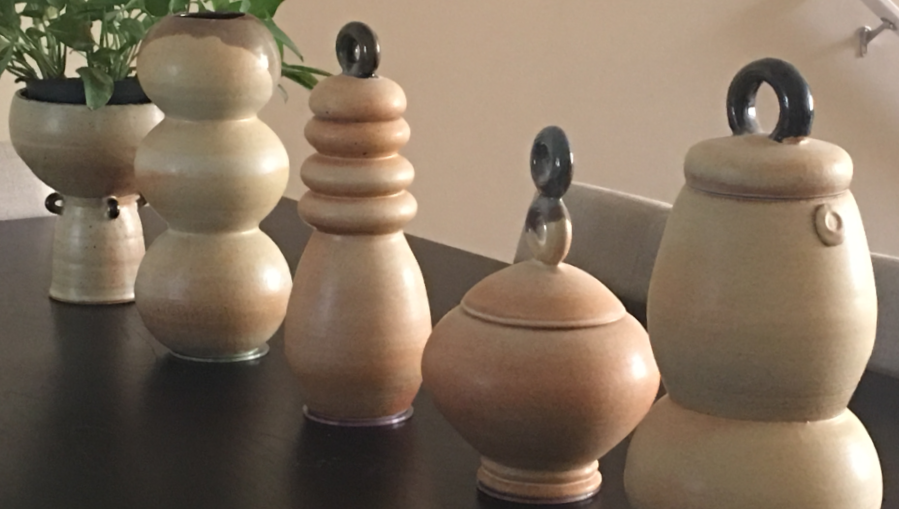A POTTERY GlOSSARY
| hand building | Coiling: A hand method of forming pottery by building up the walls with coils of rope-like rolls of clay. Slab Building: The clay is pressed into thin slabs that are then cut, assembled, and shaped into the desired form. Pinching: It usually starts by a potter inserting a finger into a ball of clay and pinching the walls to thin and shape the pot. |
|---|---|
| Wheel Throwing | Throwing: A process of producing pottery by use of a rapidly rotating disk referred to as a potter’s wheel.Trimming:Always trim the pot based on or following the inside shape. |
| Slip Casting | It is a technique for the mass-production of pottery and ceramics, especially for shapes not easily made on a wheel.In slip-casting, a liquid clay body slip (usually mixed in a blunger) is poured into plaster moulds and allowed to form a layer, the cast, on the inside walls of the mould. |
Firing Terms-Heating pottery or sculpture in a kiln or open fire to bring the clay or glaze to maturity.
- Bisque firing: First firing, without glaze. Slips can be used in a bisque firing.
- High fire: Describe clay or glazes that have been fired to maturity in cone 10(2350F).
- Low fire: The range of fired clay and glazes in which the temperature reached is usually in the cone 06(1850F).
Glaze: A thin coating of glass. An impervious silicate coating, which is developed in clay ware by the fusion under heat of inorganic materials.
Clay: Alumina + silica + water
Greenware: A stage in the production of pottery where a vessel and been from and is going through the drying process necessary before it can be safely fired.
Leather Hard: Stage of the clay between plastic and bone dry. Clay is still damp enough to join it to other pieces using slip.
Bone Dry :Completely air dried.
Kiln: A furnace of refractory clay bricks for firing pottery and for fusing glass.

































